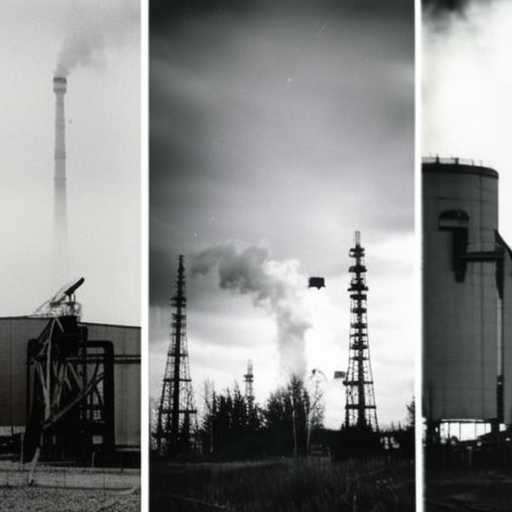Summary:
The Chernobyl disaster was a catastrophic nuclear accident that occurred on April 26, 1986, at the No. 4 reactor in the Chernobyl Nuclear Power Plant, located near the town of Pripyat in the Ukrainian SSR. It is considered the worst nuclear disaster in history and had far-reaching environmental, health, and economic consequences.
Background:
The Chernobyl Nuclear Power Plant was one of the largest in the Soviet Union and was designed to provide electricity to the surrounding region. On the fateful day, a safety test was being conducted on the reactor, which involved shutting down the cooling system. However, a combination of design flaws and operator errors led to a sudden power surge, causing a steam explosion and subsequent fire.
Immediate Impact:
The explosion released a massive amount of radioactive material into the atmosphere, contaminating the surrounding area and spreading radioactive particles across Europe. The immediate impact was devastating, with two plant workers dying on the day of the accident and 29 others succumbing to acute radiation sickness within the following weeks.
Containment and Cleanup:
Efforts to contain the disaster involved the construction of a concrete sarcophagus, known as the Chernobyl Shelter, over the damaged reactor. This structure helped prevent further release of radioactive material. Additionally, a massive cleanup operation was undertaken, involving the evacuation and resettlement of thousands of people from the affected areas.
Long-Term Consequences:
The long-term consequences of the Chernobyl disaster were far-reaching. The immediate area around the reactor, known as the Exclusion Zone, remains uninhabitable to this day. The release of radioactive particles caused an increase in cancer rates, particularly thyroid cancer, among the affected population. The environmental impact was also significant, with the contamination of soil, water, and wildlife.
International Response:
The Chernobyl disaster had a profound impact on international nuclear safety regulations. It exposed the risks associated with nuclear power and led to improvements in reactor design and safety protocols. The incident also prompted the establishment of the International Atomic Energy Agency’s (IAEA) Convention on Nuclear Safety and the creation of the World Association of Nuclear Operators (WANO) to promote safety and cooperation among nuclear power plant operators.
Legacy:
The Chernobyl disaster remains a stark reminder of the dangers of nuclear power and the potential consequences of human error. It serves as a cautionary tale for the industry and has influenced public opinion on nuclear energy. The affected region continues to grapple with the aftermath of the disaster, with ongoing efforts to mitigate the long-term effects and provide support to affected communities.
In conclusion, the Chernobyl disaster was a catastrophic nuclear accident that occurred in 1986, resulting in the release of a significant amount of radioactive material. The immediate impact was devastating, with fatalities and widespread contamination. The long-term consequences included increased cancer rates and environmental damage. The international response led to improvements in nuclear safety regulations and a greater emphasis on cooperation among nuclear power plant operators. The legacy of the Chernobyl disaster serves as a reminder of the risks associated with nuclear power and the importance of prioritizing safety.












